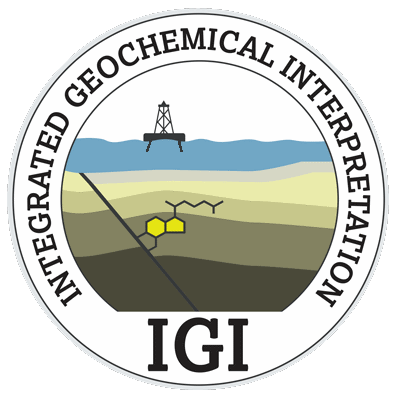Creating and Applying Graph Palettes
Overview
Graphs in p:IGI+ allow the use of Colour, Symbol and Size palettes to add further dimensions to the visual inspection and interpretation of the geochemical data presented.
Version: p:IGI+ 1.17.0.2+ (Apr 2019)
Usage: Graph --> New palette --> New colour palette..., New shape palette... , New size palette...
How to use in practice
Graph Palettes
Palettes, to add a further dimension to the visual inspection and interpretation of the geochemical data presented on a p:IGI+ graph, can be created on the basis of any data property in the project database. Thus in p:IGI+ we can have either:
The respective new palette type creation windows are accessed from Graph --> New Palette --> Respective Palette type... or use the toolbar shortcut icon:
![]()
With all palettes there are 3 sample assignment classes:
- Assigned - a sample possesses a string/value matching a ‘shown’ assignment palette entry and is allocated the specified colour, symbol or size
- Unassigned - a sample possesses a string/value matching the palette property but is either ‘hidden’ or not listed as an assignment palette entry list. It is allocated the specified colour, symbol or size or is chosen not to be shown at all.
- No Data - a sample does not possess a string/value matching any of the assignment palette entries and is allocated the specified colour, symbol or size or is chosen not to be shown at all.
All palettes also have the option to Only show legend entries with data i.e. show the legend labels only for palette entries which have been allocated to data on a graph.
The order of the colour palette entries, which can be changed by drag and drop in palette editor, dragging using the Display colour swatch, are arranged will determine the graph draw order:
- Top of the assignment list - drawn to the front of the graph
- Bottom of the assignment list - drawn to the back of the graph
- Unassigned and No Data - always be drawn to the very back of the graph
Once created Colour, Symbol and Size palettes will appear listed in the respective base artefact manager folders. When assigned to a graph a linked copy of the palette is created. Various options are available once a palette are applied to a graph. The three palette types are:
- Colour - this is the master palette at present and defines the draw order of the points on the graph. Colours can be set using the Auto Fill option which will create a randomised set of 'visually distinct' colours based on a algorithm designed to create a range of colours that are distinct taking into account common forms of colour blindness. Users can also set the base colours using the Anchor colour picker - not the advanced tab can also set the transparency. By default the colours are interpolated between the anchors, and if desired a specific colour can be temporarily highlighted using the Override colour picker.
- Shape - the shape palette can be used to select from a range of shapes, including half filled symbols. By default symbols use a disk shape. Auto Fill will cycle the shapes through all available shapes in the palette.
- Size - this is used to set the size of the symbol used. This can be used to make all the symbols bigger / smaller. The largest symbol size is 32 pixels square, the smallest 8 pixels. The symbol size can be set by a slider.
Palettes can be exported from artefact manager as a saved template for use in future projects (as long as a similar naming schema / data QC process has been used in the different projects).
Palettes are also used to define groupings, e.g. by lithology type, for calculating stratified statistics.
Video tutorials
None Available
